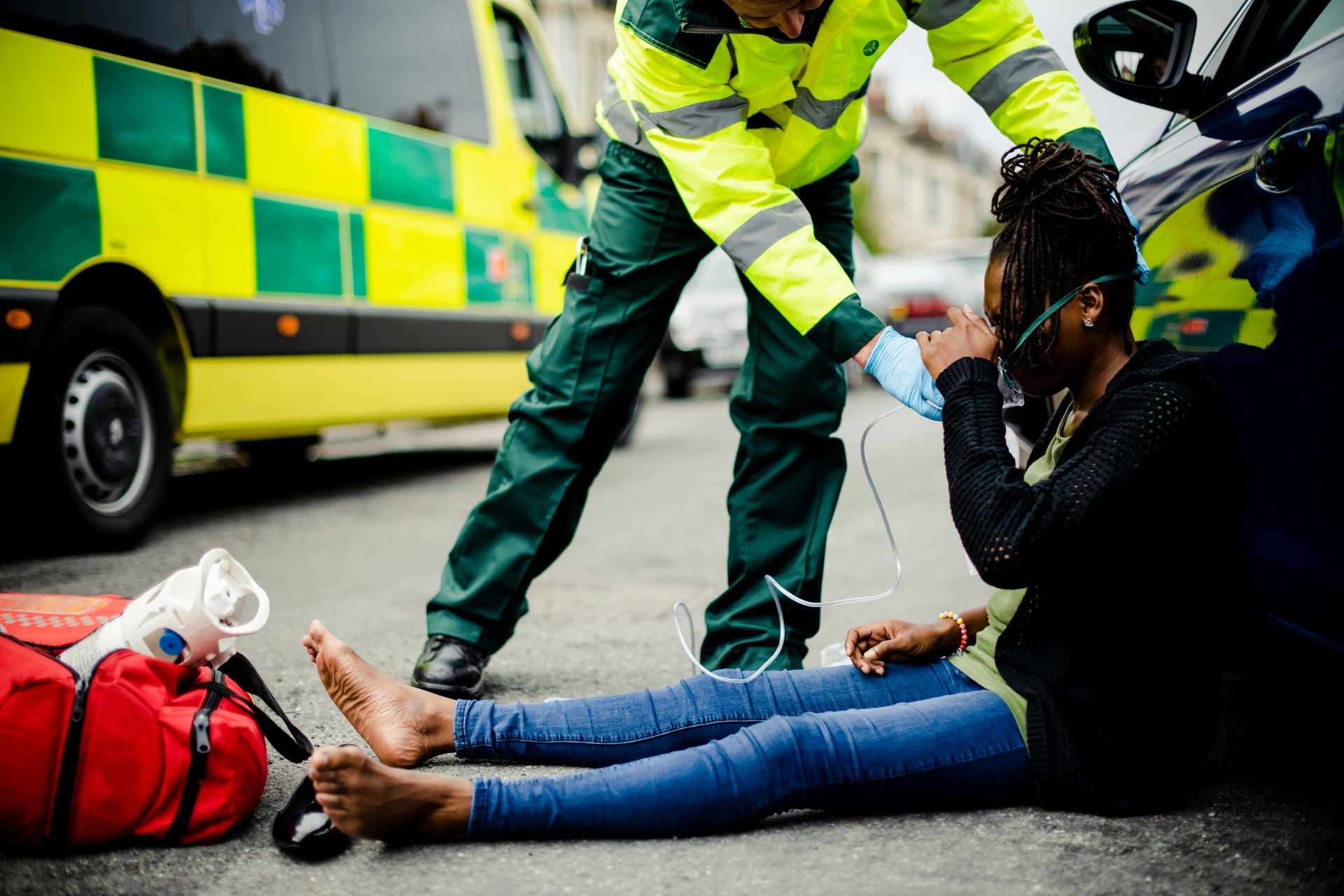Breathing Assessment
 Assessing breathing is an important aspect to identify any deficits that may be present, or any worsening symptoms. An initial review of rate, depth, and effectiveness will give you an idea of any potential pathophysiology happening. Is the rate within normal parameters, is it elevated or decreased indicating an imbalance of PO2/PCO2 or acidity? Is it regular or irregular indicating potential issues with the Medulla respiratory centre? Is the depth adequately perfusing the patient, is it shallow breaths meaning potentially poor air entry, is it deep and irregular suggesting possible neurological issues? Is the patients’ breathing effective, is there evidence of cyanosis, excessive intercostal, diaphragm and abdominal use to get air in, are they having use a tripod position to help maintain air entry? Is their Oxygen Saturation (SPO2) maintaining between a healthy normal range, 94-98%, or 88-92% in COPD?
Assessing breathing is an important aspect to identify any deficits that may be present, or any worsening symptoms. An initial review of rate, depth, and effectiveness will give you an idea of any potential pathophysiology happening. Is the rate within normal parameters, is it elevated or decreased indicating an imbalance of PO2/PCO2 or acidity? Is it regular or irregular indicating potential issues with the Medulla respiratory centre? Is the depth adequately perfusing the patient, is it shallow breaths meaning potentially poor air entry, is it deep and irregular suggesting possible neurological issues? Is the patients’ breathing effective, is there evidence of cyanosis, excessive intercostal, diaphragm and abdominal use to get air in, are they having use a tripod position to help maintain air entry? Is their Oxygen Saturation (SPO2) maintaining between a healthy normal range, 94-98%, or 88-92% in COPD?
Following an initial review, the FLAPS TWELVE mnemonic can be used for a more in-depth review of Breathing;
- Feel – Feeling the chest for equal rise and fall indicating good air entry and both lungs are rising. Felling can also help identify if there are any deformities, swelling, crepitus, or subcutaneous emphysema.
- Looking – Again, a visualisation of the chest will indicate if there is good and equal rise and fall, and any other obvious injuries or abnormalities.
- Auscultate – Auscultating all lobes of the lungs will indicate any pathophysiological events happening within. Is there bilateral and equal air entry, is there any wheezing/crackles/rales/rubs/abnormalities?
- Percuss – Percussion helps identify if there is normo-resonance, hyper-resonance, or hypo-resonance. If hyper, this may indicate that there is excessive air built-up within the area of percussion. If hypo, then this may indicate that there is a build-up of fluid/blood within the area of percussion.
- Search – A search around the sides of the chest, under the armpits, and of the back may reveal a hidden wound of deformity.
- Trachea – Feeling the location of the trachea can help identify if there is a potential tension-pneumothorax happening as it will be displaced from centre.
- Wounds – Searching for any wounds around the neck or chest that may be affecting Airway and Breathing.
- Emphysema (subcutaneous) – Is there any subcutaneous emphysema forming around the chest or neck areas indicating air escaping from the lungs/tracheas through injury/perforation.
- Larynx – Is the Larynx in-tact, if it is injured or deformed then it may cause some airway compromise.
- Veins (jugular distention) – Is there evidence of jugular vein distention, indicating a pneumothorax.
- Evaluate – Put all of the information you have gathered together, is there any deficits or injuries affecting the patients’ breathing?